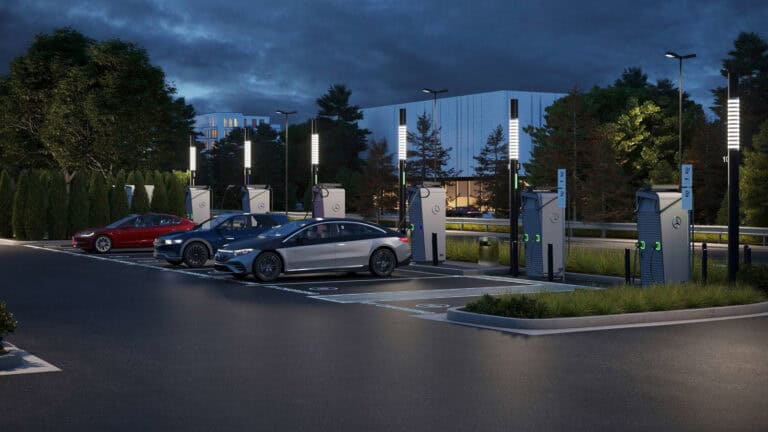- Electric vehicles are becoming more affordable, with the average BEV transaction price dropping to $56,371 in June 2024.
- Charging an EV is significantly more affordable than fueling a gas car, costing around $0.03 per mile versus $0.12 per mile for gas vehicles.
- EV maintenance is more affordable due to fewer moving parts, saving owners an average of $4,600 over the vehicle’s lifetime compared to gas cars.
ADVERTISEMENT
Electric vehicle (EV) sales are picking up speed in the United States, with battery electric vehicles (BEVs) accounting for 7.1% of all light-duty vehicles sold in the second quarter of 2024, according to a report by the U.S. Energy Information Administration (EIA), with hybrid and plug-in hybrid vehicles (PHEV) pushing the total electrified market share to 18.7%.
As prices drop and tax incentives grow, more people are wondering if EVs truly are more affordable than gas-powered cars. Let’s take a closer look.
ADVERTISEMENT
EV Prices Fall as Competition Heats Up
The initial cost of EVs has historically been a barrier for many consumers, but prices are steadily declining. According to data from Cox Automotive, the average transaction price for a BEV dropped from $57,405 in January 2024 to $56,371 in June 2024.
While EVs are still 15.9% more expensive than the average light-duty vehicle, this drop marks real progress within just six months.
Much of this decline can be attributed to increased competition. Tesla, which once dominated the market, saw its share of EV sales dip below 50% for the first time since late 2017. Legacy automakers such as Ford, Chevrolet, Hyundai, and Kia have introduced more affordable models, like the Chevrolet Equinox EV and Hyundai IONIQ 5, contributing to broader market accessibility.
Luxury EVs dominated the segment, representing 73.8% of all BEV sales. While Tesla remains a leader with 48.9% market share, legacy automakers like Ford and Chevrolet are making significant strides with models such as the Mustang Mach-E and Silverado EV.

EVs Cost 4x Less to Drive Per Mile Compared to Gas Cars
One of the key advantages of EVs is their lower operating costs. Electricity is generally cheaper than gasoline on a per-mile basis. For instance, charging a BEV at home with a level 2 charger costs approximately $0.12 to $0.16 per kilowatt-hour (kWh), translating to $4-$6 for a full charge on a mid-sized EV with a 250-mile range.
With EVs like the Tesla Model 3 consuming around 25 kWh per 100 miles, the cost per mile is approximately $0.03.
| Aspect | Electric Vehicle (EV) | Gas-Powered Vehicle |
|---|---|---|
| Cost of Energy/Fuel | $0.12–$0.16 per kWh | $3.50 per gallon |
| Cost for Full Charge/Refuel | $4–$6 for a mid-sized EV with a 250-mile range | $52.50-$87.50 (15-25 gallon tank) |
| Energy Consumption | 25 kWh per 100 miles | 30 miles per gallon |
| Cost Per Mile | $0.03 | $0.12 |
| Annual Cost (15,000 miles) | $450 in electricity | $1,800 in gasoline |
| Comparison of Cost Per Mile | 4x cheaper than gas-powered vehicle | 4x more expensive than EV |
In comparison, a gas-powered car averaging 30 miles per gallon (mpg) with a fuel price of $3.50 per gallon costs about $0.12 per mile, which is four times higher. Over 15,000 miles per year, this translates to $450 in electricity for the EV versus $1,800 in gasoline for the traditional car.
ADVERTISEMENT
EVs Cost 50% Less to Maintain Than Gas Cars
EVs are much easier to maintain. They do not need oil changes, spark plugs, or traditional transmission repairs, saving owners time and money. According to a Consumer Reports study, EV owners spend about 50% less on maintenance and repairs over the vehicle’s lifetime compared to gas car owners.
Regenerative braking systems in EVs extend the life of brake pads, while electric motors have fewer components prone to wear and tear. Even when factoring in potential battery replacement costs, EV maintenance remains more affordable over the long haul.

EV Tax Credits: Up to $7,500 Savings with Key Requirements
The Inflation Reduction Act (IRA) has expanded federal tax credits for electric vehicles, potentially reducing the upfront cost of EVs by up to $7,500. However, these credits come with conditions.
Not all North American-made EVs qualify, but models like the Ford F-150 Lightning and Tesla Model Y often meet these criteria, making them more attractive to cost-conscious consumers.
To qualify, vehicles must meet domestic content requirements for assembly, battery components, and critical minerals. While 74.4% of EVs sold in the U.S. were manufactured in North America in the second quarter of 2024, not all meet the criteria for tax credit eligibility.
Additionally, states like California and New York offer rebates ranging from $2,000 to $4,500, further offsetting purchase costs.
ADVERTISEMENT
EVs Save Up to $11K Over Their Lifetime: Here’s How
Calculating the lifetime cost of an electric vehicle (EV) involves more than just the upfront price. It requires factoring in tax rebates, fuel, maintenance, and repair costs. The Department of Energy (DOE) offers a helpful calculator for this, allowing you to account for variables like your model’s efficiency, annual mileage, regional electricity prices, and maintenance habits. By comparing these figures to a gas-powered equivalent, you can get a clear picture of the total cost of ownership (TCO).
The average driver keeps a new vehicle for about seven years, a timeframe used in a 2024 study by Atlas Public Policy for the NRDC. The study analyzed five popular gas models across different vehicle classes (from compact sedans to pickup trucks) against their electric counterparts. It found that EVs consistently delivered cost savings, with net lifetime savings ranging from $7,000 to $11,000.
These savings are primarily due to lower fueling costs, reduced maintenance, and fewer repairs compared to gas-powered cars. For example, EVs eliminate the need for oil changes, and regenerative braking extends the lifespan of brake components.

Factors to Consider Before Buying an EV
- Charging Infrastructure: Home charging is cost-effective but requires an upfront investment in a Level 2 charger. Public charging costs can vary significantly depending on the network and location.
- Driving Range: While most new EVs offer ranges above 250 miles, long-distance drivers may need to plan for charging stops.
- Local Incentives: Research available tax credits and rebates to maximize savings.
Why EVs Make Financial Sense Now
Electric vehicles are no longer just a passing trend. They are quickly becoming a practical and cost-effective choice for many drivers. While the upfront price of an EV might still be a bit higher than a gas-powered car, falling prices, tax credits, and big savings on fuel and maintenance are making EVs more competitive. To see how much you could save, tools like EV cost calculators can help you crunch the numbers based on your driving habits and expenses.
ADVERTISEMENT

IMAGES: ELECTRIFY EXPO
FTC: We use income-earning auto affiliate links. Learn more.











